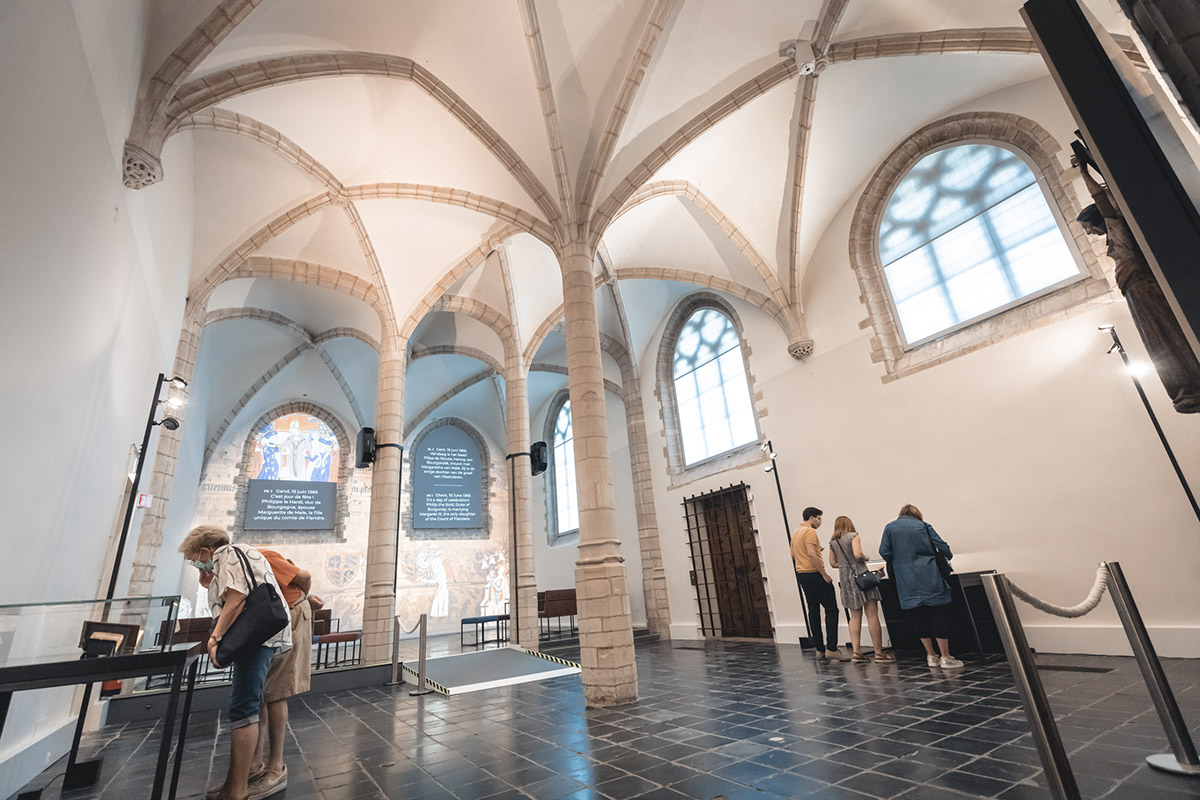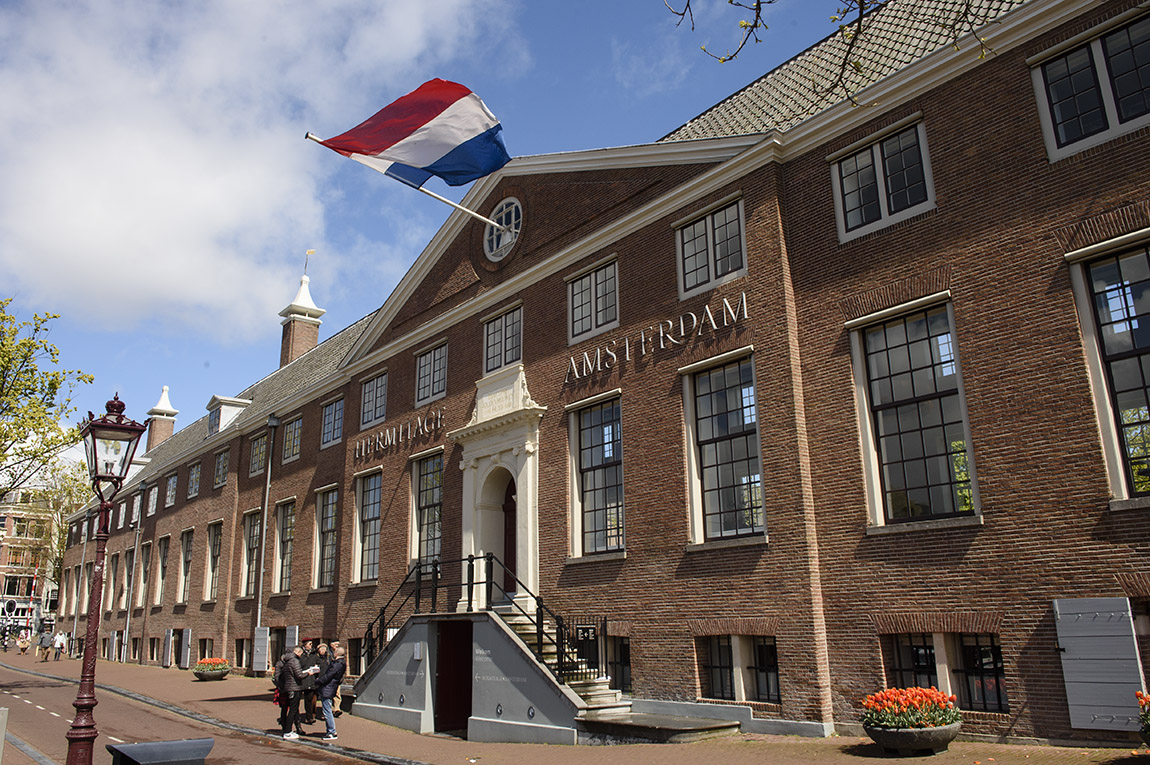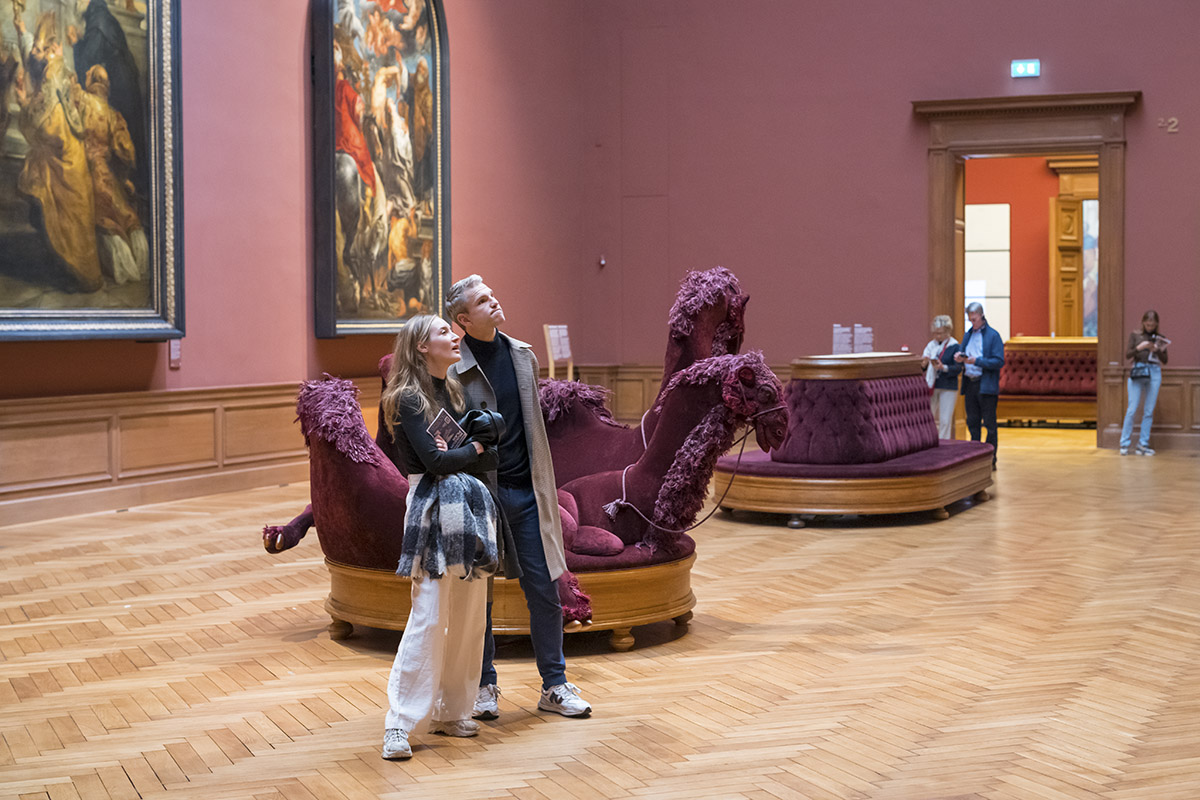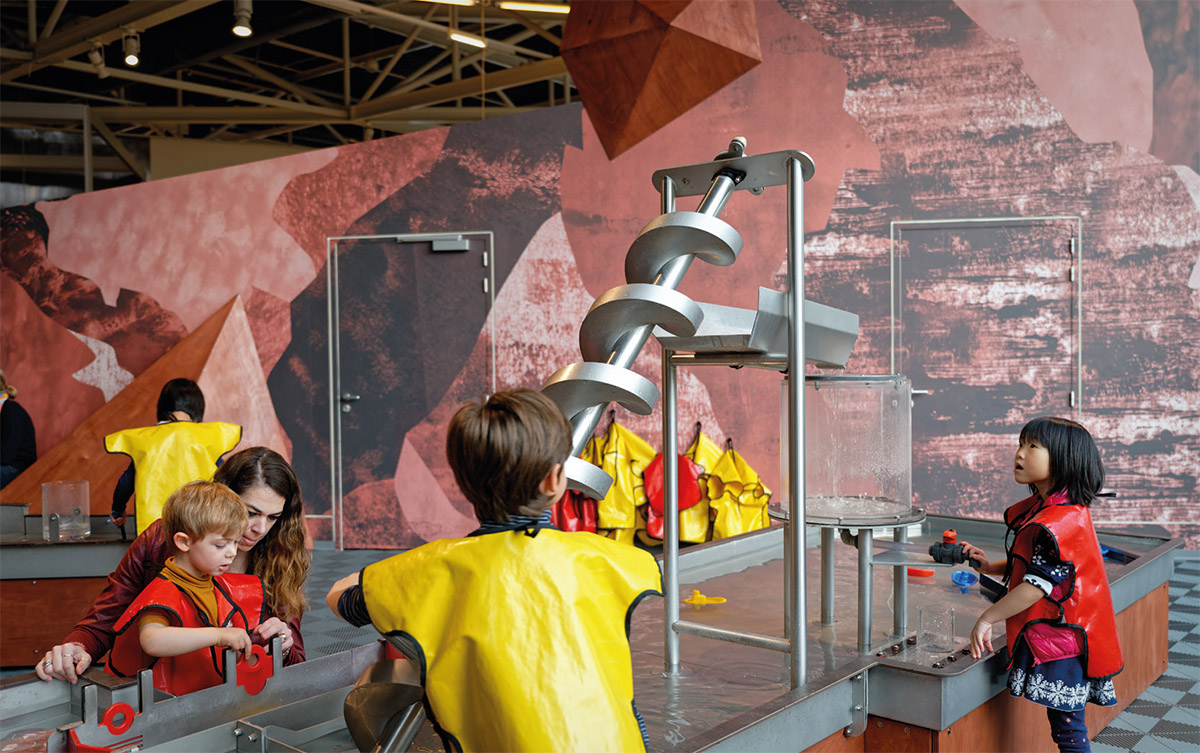Teylers Museum & Frans Hals Museum
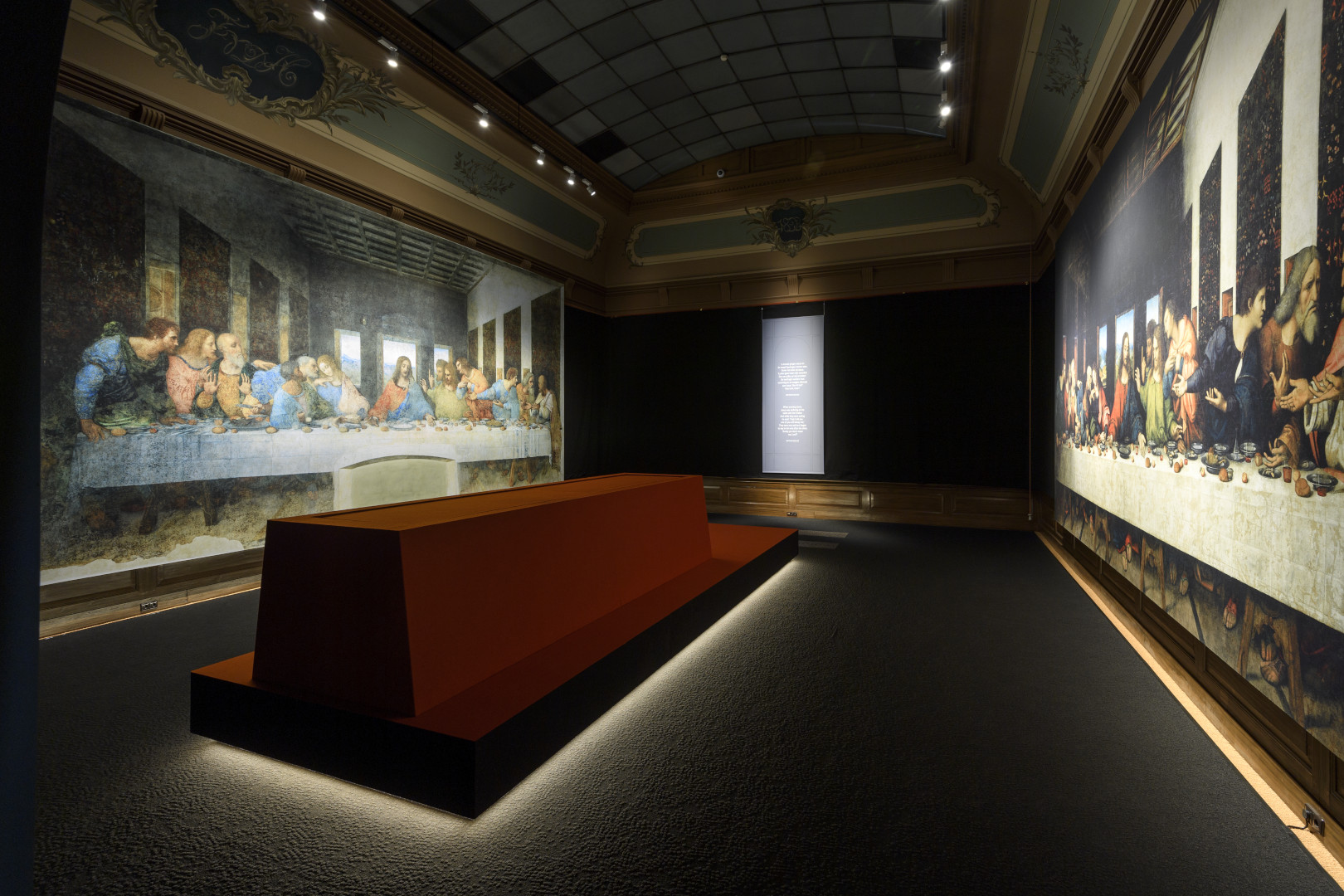
Capturing the soul
TEXT: ISA HEMPHREY
In Amsterdam, you can share a coffee with a waxwork figure of George Clooney. Many have flocked to Madame Tussauds for that moment of belief that they are in the presence of a celebrity. But this is a tough crowd. Exposure to media has made us experts in recognising stars, testing the waxwork crafter’s ability to create a likeness. Outside the capital, the city of Haarlem is celebrating two artists who occupied themselves with the same challenge as Tussaud’s waxwork sculptors: how to convincingly portray a human being. Centuries apart, but united in their artistic pursuits, Italian Renaissance artist Leonardo da Vinci (1452-1519) and Dutch Golden Age painter Frans Hals (1582/3-1666) are considered masters of portrayal. But what can they teach us about what is required to portray a human being in a convincing way?
Ahead of the 500th anniversary of Da Vinci’s death next year, the Teylers Museum is exhibiting his drawings of faces. Meanwhile, the Frans Hals and the Moderns exhibition explores, 150 years later, how 19th-century modern painters like Vincent van Gogh rediscovered Hals’ portraits.

A Girl’s Head and Shoulders, Three Quarters to the Left (c. 1490) by Leonardo da Vinci, metalpoint, heightened with white on paper with a pale ochre yellow preparation. Credit: Biblioteca Reale, Turin.
Inspiration and influence
It was German artist Max Liebermann who said that a Frans Hals portrait looks good “because it convinces us”. Hals’ possible influences can perhaps explain what he learned about painting convincing portraits. It is believed that Hals made a trip to Antwerp to study important artists of the day, including Peter Paul Rubens, whose loose brushstrokes must have made a “deep impact” on Hals, according to exhibition curator Marrigje Rikken. Rubens and his contemporaries painted ‘study heads’, oil paintings of ordinary people with particular facial characteristics used as models for larger pieces. Being both a virtuoso of brushstrokes and portraying ordinary people, this was what modern painters praised Hals for. So, could Rubens and his contemporaries have been Hals’ inspiration when he beheld their paintings in Antwerp?
While Hals seemed to exclusively paint portraits, Da Vinci ventured into the scientific realm. A significant obsession of his was anatomy and he would dissect cadavers to understand how the human body functioned. The fruit of his labours are found in the detail of his drawings. Shown alongside a print of The Last Supper (c. 1494-98) at the exhibition, is Study for the Head of Judas (c. 1494), where a man with a prominent chin is arching his neck away from the viewer. The twist and pull of a labyrinth of interconnecting neck muscles wrapped in skin is on display. The most protruding muscle at the centre of this piece is the sternocleidomastoid muscle, extending from the back of the head to the collarbone.
Both artists discovered the value of working from life to convincingly portray someone. While Da Vinci dissected what he sought to portray, Hals only had to observe masterpieces in Antwerp to understand why live models were essential. Liebermann was a huge fan of Hals, making around 30 copies of his paintings in one summer. When asked to compare the copies to the originals, Rikken responds: “I think it’s always a little bit less”. The important difference is that Hals saw the sitter of the portrait himself and therefore the painting reflects that person. “I think it was almost impossible for the modern masters to get the same level of individual-ness,” says Rikken.
Yet a popular philosophy of Da Vinci’s era may have influenced his work negatively. Da Vinci expert and guest curator Michael W. Kwakkelstein explains in an exhibition essay that the artist studied the slums of Milan looking for a perfectly horrid face to represent the villain Judas in The Last Supper. A philosophy of this time was physiognomy, the theory that a person’s inner character is reflected in their outer appearance. A beautiful person was assumed to have a good soul, while an ugly person would likely be immoral. In Head of a Man, Full Face, and the Head of a Lion (c. 1508-09), a glowering man stares with great intensity at the viewer alongside an overlapping drawing of a lion, indicating a connection between this warrior-type and the ferocious beast. “That particular drawing is a strong indication that Leonardo was at least occupied with the physiognomy theory in quite a serious way,” says exhibition curator Michiel Plomp. Despite his meticulous anatomical studies, physiognomy may have prevented Da Vinci from truly capturing an individual because he could have been attributing a false inner character and soul to the people he portrayed based on their appearance. “Although Leonardo rejected the predictive aspects of physiognomy, he clearly subscribed to the view that facial characteristics reveal man’s inner nature or temperament,” says Kwakkelstein.

Alongside original paintings by Frans Hals are copies made by 19th-century artists.
Ordinary people
Da Vinci flitted between two extremes: the beautiful and the grotesque. For instance, his drawing Head of a Youth with Curly Hair in Profile to the Right (c. 1517) was believed to be either a portrait of his favourite pupil Salai or a representation of his view of ideal beauty. But Da Vinci was also fascinated with observing unconventional faces. An example is Head of an Old Man or Woman in Profile to the Left (c.1490-95), a drawing of an extremely angular face with a very pronounced chin and small nose. Hals took a similar interest in unconventional sitters rather than just the elite or nobility. For example, his piece Malle Babbe (1630-35) is of a Haarlem barmaid who became a patient in a mental institution. Furthermore, Hals was a gifted painter of children, using even looser brushstrokes to capture their spontaneity and laughter in a period where such expressions were rarely painted. Director of the Frans Hals Museum, Ann Demeester, explains that 19th-century painters saw “social realism” in his work, an almost photographic depiction of ordinary life.
Choosing to portray ordinary people shows a willingness to explore the rich variety found in nature and humanity. Vasari, a biographer of Renaissance artists, wrote that Da Vinci invited people with unusual faces into his home, gave them wine and told them jokes. He would then observe and draw their raucous laughter which, according to Plomp, was something that you did not do if you were from a proper family. It was considered only for the ‘simple’. But while Vasari stated that many of Da Vinci’s drawings of curious heads were drawn from life, others were exaggerated for comical effect. For example, Bust of an Old Man with a Deformed Face in Profile to the Right (c. 1490) is from a group of drawings of grotesque faces manipulated to evoke laughter. They could have been used during his time at the court of Sforza in Milan, where he used these caricatures as decoration for theatre plays.
Some 19th-century artists saw Frans Hals as a political activist because he portrayed the lower class. However, in art critic John Berger’s book Ways of Seeing, he states that Hals was the first portraitist to paint human emotions created by capitalism. The Dutch Golden Age resulted from independence from Spanish oppression that brought affluence to the middle class and cities like Haarlem. Present at the exhibition, is Hals’ portrait of Pieter Jacobsz Olycan, a Dutch brewer and mayor of Haarlem. While Hals could have painted the lower class as a form of commentary, some of his sitters were wealthy individuals benefitting from the renaissance occurring in the Netherlands. The point is that while both artists strived to create convincing portrayals, they also worked in response to their circumstances. Da Vinci exaggerated his faces to entertain the court of Milan, and Hals may have captured the positivity felt in the Netherlands for the benefit of his newly rich patrons.

Frans Hals heavily influenced 19th-century painters in their own portraiture.
Masterful techniques
Present at the Teylers Museum is the metal point A Girl’s Head and Shoulders, Three-Quarters to the Left (c. 1490), known as ‘the Mona Lisa of drawings’. A beautiful woman looks over her shoulder at the viewer, something Kwakkelstein thinks is crucial as it “enhances the psychological link between the viewer and sitter”. The shading of her delicate face is blended perfectly, highlighted with thin scratches of white and sparingly used lines suggesting the neck and hair. This drawing displays two signature Da Vinci techniques. Firstly, he used dark lines sparingly because he knew that the eye does not see these lines in real life. Secondly, was his mastery of shading to accurately display the three dimensions of the face. In his paintings, he would apply a glaze to create fine shading and transitions between colours and tones that made brushstrokes almost invisible (known as sfumato). Kwakkelstein explains that the ambiguous corners of the eyes and mouth, enhanced by Da Vinci’s sfumato technique, is what adds power to the expression of the Mona Lisa. The lifelike appearance of Da Vinci’s subjects almost makes him a photographer without a camera.
In complete contrast, Hals was a champion of the brushstroke. They flowed sometimes unblended across the crevices of his sitters’ faces. But despite what 19th-century painters believed about Hals’ work, his portraits were not completed in one toss. Rikken explains that Hals painted in layers from the initial outline to the finished piece, waiting for each layer to dry before continuing. Hals’ technique went out of fashion by the end of the 17th century. “I think it was definitely seen as a novelty,” explains Rikken. Yet, 19th-century artists, many of whom were impressionist painters, recognised his brushwork and admired how he portrayed a fleeting impression in the life of his sitters.
Here we have two different styles for portrayal, but the effect is essentially the same. The hyper realness of Da Vinci’s work creates convincing portrayals partly because they look as though they could come alive. The eyes in his Portrait of a Woman (c. 1494) look so real it is as though she is about to blink. In contrast, the brushwork of Hals is so loose and layered, the whole piece becomes animated. In Liebermann’s words, “it is alive”.

Head of a Man, Full Face, and the Head of a Lion (c. 1508-09) by Leonardo da Vinci, red chalk, heightened with white on paper with a red preparation. Credit: Royal Collection Trust / © Her Majesty Queen Elizabeth II.
But they took their pursuits further than just the face: at the Teylers Museum exhibition, you will find an original-size print of The Last Supper. “In The Last Supper, this comes all together, expression and emotion in faces and the body language,” says Plomp. The mural depicts the moment Jesus tells his disciples that one of them will betray him. Instead of painting these biblical figures as static bodies sitting straight up at a table, Da Vinci has them interacting in immediate reaction to Jesus’ bombshell announcement in a theatrical spectacle. Da Vinci told young painters that the intentions of the minds of the faces and bodies must be clear. For instance, in Leda and the Swan (1506-08), it is clear to see the sensual connection between the woman and the bird. “The most important thing in the end is perhaps that he combined so wonderfully the emotion in the face with body language,” says Plomp. Hals took commissions from the voluntary civic guard, who he would paint in a gathering. In Banquet of the Officers of the St. George Civic Guard (1627), 11 men in ruffs crowd the canvas in all their proud splendour. Each face is characterised, betraying a personality, and every man is interacting with either the viewer or each other in a seemingly blasé manner.
Da Vinci and Hals show us that convincing portrayals are about more than getting the dimensions right and recreating what a camera can do in seconds. You must capture a soul, an expression, a fleeting moment in an individual’s life. After all, what use is a portrait of a child with no hint of wonder and spontaneity? How convincing could a drawing of a weathered old man be if we did not see a lifetime written on his expression? How could you do justice to a portrait of an individual without displaying the deep complexities of their mind? Both exhibitions show the undiscovered lessons still concealed within their work and it may be the only opportunity to compare their mutual artistic pursuit in one city. No doubt that if they ever met, they would recognise in each other a passion to celebrate the beauty and peculiarity of humanity.
Catch the Leonardo da Vinci exhibition at the Teylers Museum until 6 January 2019 and Frans Hals and the Moderns at the Frans Hals Museum until 24 February 2019.
Subscribe to Our Newsletter
Receive our monthly newsletter by email
